Historical places in Indonesia transport you back through centuries of tradition, affluent culture, and multiple civilisations. From palaces of kings and ancient ruins to temples, these sites welcome you to the cradle of Southeast Asian heritage, spirituality, and innovativeness. Walking through these monumental grounds, you’ll feel the rich cultural heritage and the enduring influence of Indonesia’s past on its very dynamic modern life. Indonesia is not just an archipelago but an open-air museum wherein every stone tells a thousand stories. It is a place for every history buff and lover of time-tested heritage.
10 Historical Places To Visit In Indonesia
Historical places in Indonesia reveal its political and multicultural past; they are living testimonials to ancient cultures, religions, and kingdoms waiting to be explored.
1. Borobudur Temple
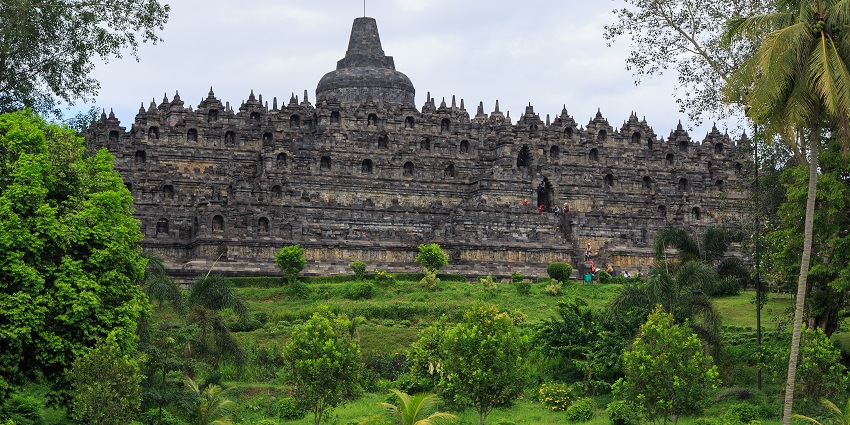
Photo: CEphoto, Uwe Aranas / Wikimedia Commons
Borobudur Temple is one of the most significant historical places in Indonesia and the largest Buddhist monument in the world. Constructed during the 9th century by the Sailendra dynasty, this colossus temple consists of nine superimposed tiers covered with more than 2,600 exquisite relief panels and 504 Buddha statues. The design of the temple is the epitome of Indonesian ancient art and architectural skill and reflects the Buddhist path to enlightenment. To visit Borobudur is an unusual opportunity to be surrounded by an ancient spiritual environment and discover Indonesia’s rich Buddhist history.
Location: Magelang, Central Java
Major Attractions: Main stupa, Buddha statues, relief panels
How To Reach: By car or tour from Yogyakarta
2. Prambanan Temple
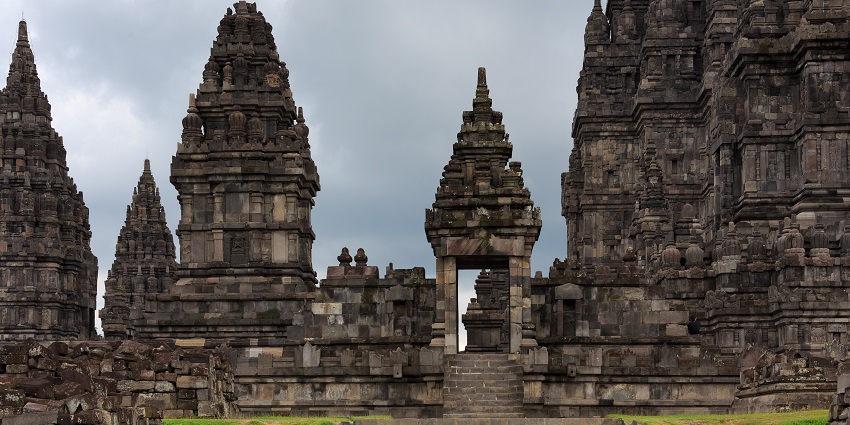
Photo: CEphoto, Uwe Aranas / Wikimedia Commons
Prambanan Temple is a beautiful Hindu temple compound dedicated to the Trimurti deities, who are Brahma, Vishnu, and Shiva. Built in the 9th century, Prambanan is famous for its high spires and intricately carved stone reliefs that graphically recite epic Hindu myths, especially the Ramayana. The biggest Hindu temple complex in Indonesia, Prambanan, glorifies the rich spiritual diversity and advanced cultural accomplishments of ancient Java. The performances revive the ancient legends and myths and present the tourists with a mix of history, religion, and art.
Location: Near Yogyakarta, Central Java
Major Attractions: Shiva temple, Ramayana reliefs, dance performances
How To Reach: By car or shuttle from Yogyakarta
3. Uluwatu Temple
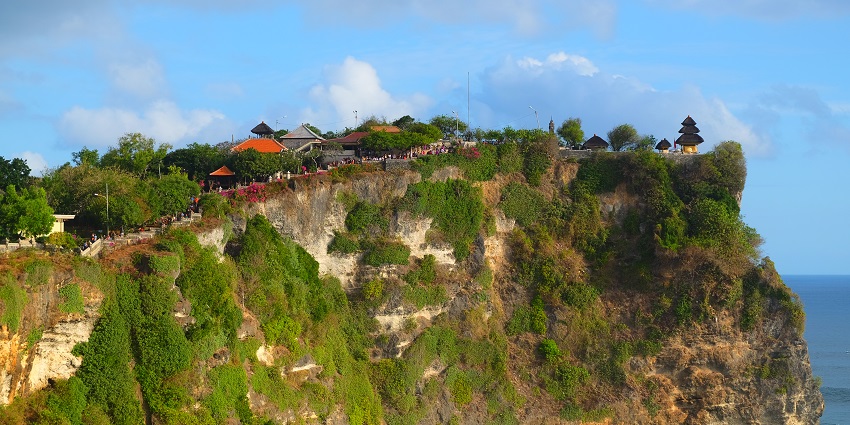
Photo: Paskuu / Wikimedia Commons
Uluwatu Temple is a breathtaking sea temple dramatically perched atop a 70-meter-high cliff on Bali’s southwestern coast. As one of Bali’s six key temples, it is believed to serve as a spiritual guardian, protecting the island from negative energies and evil spirits. The temple boasts beautiful panoramic sunsets of the Indian Ocean and is thus a popular spot for watching sunsets. The other attraction of the temple is the magical Kecak traditional dance performances held at the temple during sunset, which blend enchanting music, drama, and Balinese culture.
Location: Bali, Pecatu
Major Attractions: Ocean scenery, Kecak dance, temple structure
How To Reach: By car or motorbike from southern Bali
4. Trowulan Archaeological Site
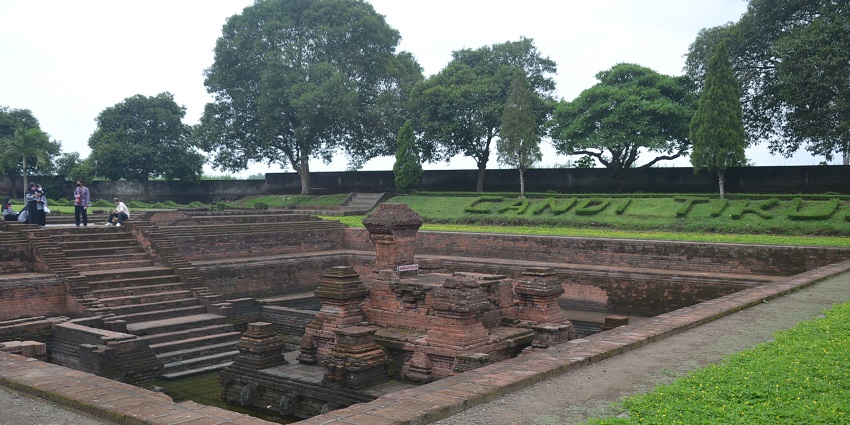
Photo: Muhamad Abdu / Wikimedia Commons
Trowulan was the thriving capital of the Majapahit Kingdom, Indonesia’s most glorious Hindu-Buddhist empire, existing between the 13th and 16th centuries. Today, it is one of the majestic historical places in Indonesia, consisting of the remains of ancient temples, gates, water basins, and houses. The ruins give a fascinating glimpse of the elaborate city planning, architecture, and culture of the Majapahit civilization. The complex is a testament to the status of the empire as a political, economic, and cultural centre of pre-colonial Indonesia.
Location: Mojokerto, East Java
Major Attractions: Bajang Ratu Gate, Candi Tikus, and ancient temples
How To Reach: By car from Surabaya or Malang
5. Sultan’s Palace, Yogyakarta
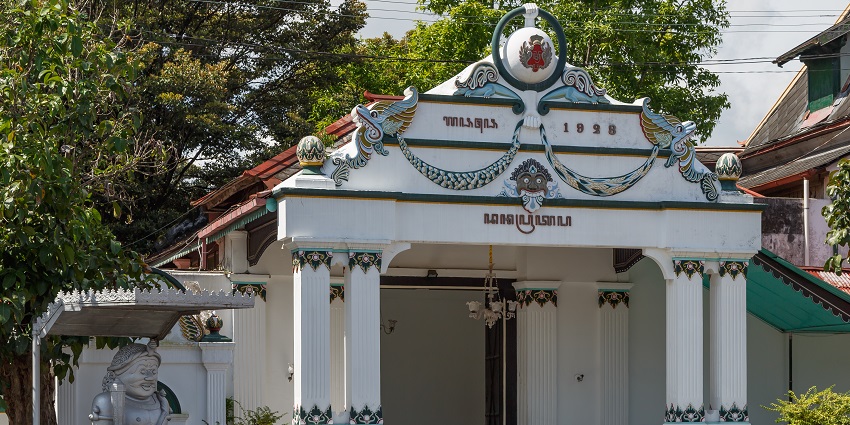
Photo: CEphoto, Uwe Aranas / Wikimedia Commons
The Sultan’s Palace (Kraton) in Yogyakarta, popularly referred to as the Kraton, is both the royal house and the lively cultural hub of the city. This magnificent palace is an addition to a living museum beautifully preserving Javanese art, music, dance, and royal traditions that offer tourists a special glimpse into the region’s heritage. Through its broad halls and filigree bedrooms, tourists can walk through historical relics, beautiful batik fabrics, and gamelan concerts that are reminiscent of the royal traditions. The palace boasts serene gardens within and on its premises as well, which enhance the serene atmosphere.
Location: Yogyakarta City Centre
Major Attractions: Traditional performances, royal artifacts, palace structure
How To Reach: Walking or taxi distance in Yogyakarta
6. Kota Tua, Jakarta
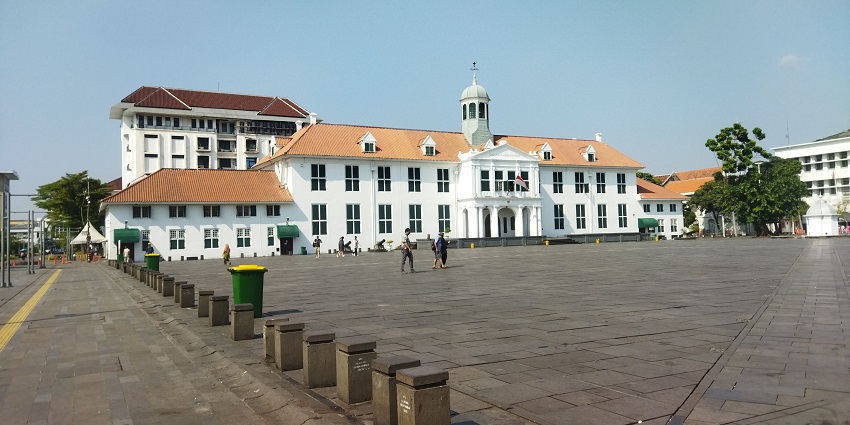
Photo: Chitra Arti / Wikimedia Commons
Kota Tua, or Old Town Jakarta, is a fascinating city with intact Dutch colonial architecture dating back to the 17th century. The charming district offers a glimpse into the colonial past of Indonesia and the development of its vibrant capital city. The visitors of Kota Tua can walk and enjoy big old warehouses, pleasant cafes, and cobblestone streets that bring back memories of the distant past. The vibrant Fatahillah Square is the precinct’s center, typically filled with street performers and local artists, contributing to the vibrant atmosphere.
Location: Jakarta Barat
Major Attractions: Fatahillah Square, Jakarta History Museum, Café Batavia
How To Reach: Taxi or public transport in Jakarta
7. Tenganan Bali Aga Village
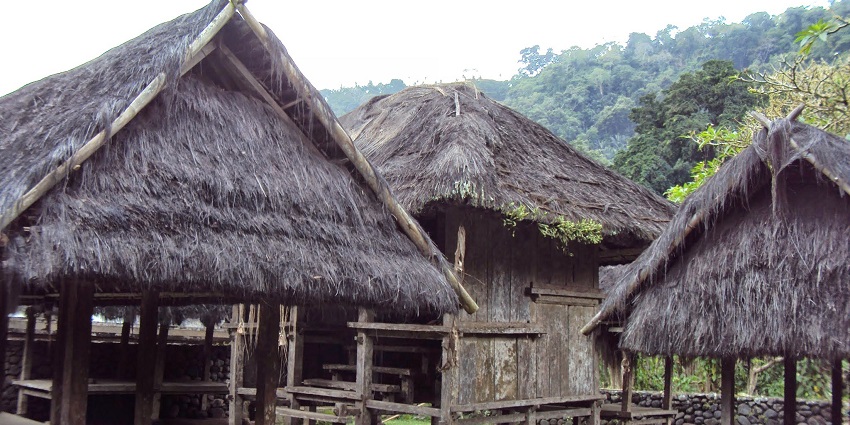
Photo: DayakSibiriak / Wikimedia Commons
Tenganan Village is one of the oldest and culturally most preserved villages in Bali, where individuals can view the native Bali Aga people going about their lives. Unlike much of Bali, in which mainstream Hinduism has gained footing, Tenganan holds on to its old ways, rituals, and traditional lifestyle, untouched by modern change. The village is famous for its beautiful double ikat weaving, a rare and delicate textile art pursued by local weavers. Visitors to Tenganan can experience authentic ceremonies and festivals that have been passed down for centuries, offering a deep connection to Bali’s original cultural roots.
Location: Karangasem, Bali
Major Attractions: Dutch houses, hand weaving of cloth, cultural ceremony
How To Reach: By road from eastern Bali
8. Fort Rotterdam, Makassar
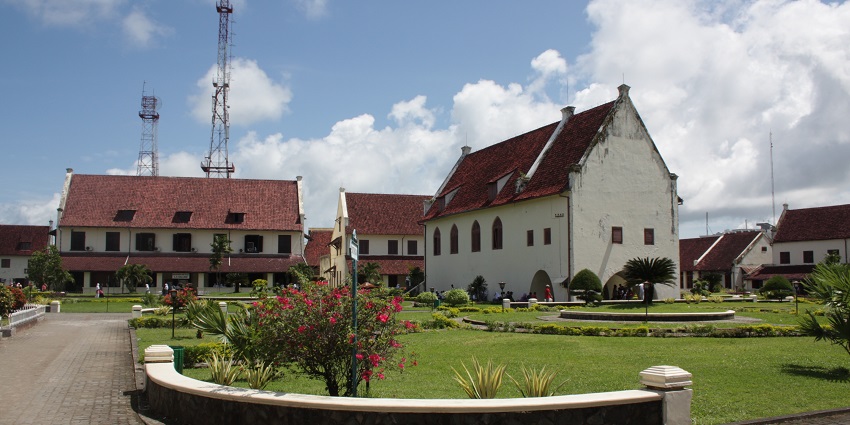
Photo: Sanko / Wikimedia Commons
Fort Rotterdam in Makassar, South Sulawesi, is a well-preserved 17th-century Dutch fort. This fort, built originally as a solid military outpost and administrative post during the Dutch colonial era, served as a pivotal instrument in the administration of eastern Indonesia. The large walls, bastions, and distinctive design of the fort are all reflective of the military engineering of the time. Fort Rotterdam nowadays is remodelled as a culture and history museum, and it presents visitors with a treasure of artefacts, traditional weaponry, and exhibitions tracing the history of the area, from the colonial period to local cultures.
Location: Makassar, South Sulawesi
Major Attractions: Dutch architectural style, historical museum, seashore views
How To Reach: By a city taxi in Makassar
9. Sangiran Early Man Site
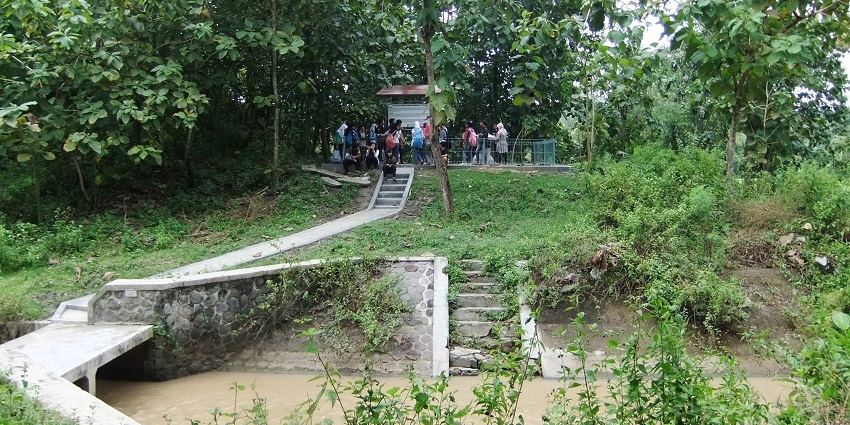
Photo: Midori / Wikimedia Commons
Sangiran, a World Heritage site, is among the most significant paleoanthropological sites in the world, located in Central Java, Indonesia. It has yielded some of Southeast Asia’s oldest human fossils, dating back more than one million years, and is critical to the study of early human evolution. Sangiran features well-architectured museums and tourist information centers that provide educational guided tours, emphasising fossil discoveries and tracing the evolutionary journey of early hominins in Indonesia. For the curious traveler in search of human origins and the ancient past, Sangiran offers a once-in-a-lifetime glimpse.
Location: Sragen and Karanganyar, Central Java
Major Attractions: Fossil discoveries, museums, and excavation sites
How To Reach: By road from Solo or Yogyakarta
10. Prasasti Ciaruteun
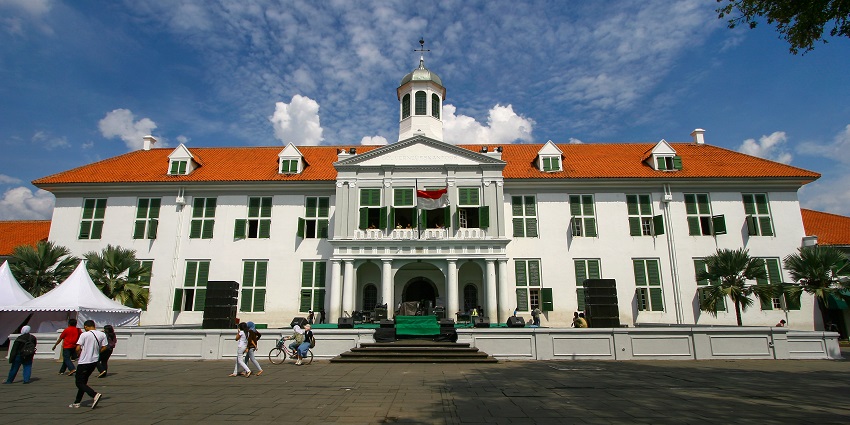
Photo: Herusutimbul / Wikimedia Commons / Image For Representation Only
The Ciaruteun Inscription is a grand 5th-century-old stone stele, one of Indonesia’s earliest known written records. Located near the Ciaruteun River in West Java, the inscription provides significant historical evidence of early Sundanese kingdom territorial claims. Written in Sanskrit, the inscription shows the influence of Indian culture and language on the societies in early Indonesia. The stele has ancient script and symbols that help historians trace the origin of the system of governance and control of the region’s lands.
Location: Bogor, West Java
Main Attractions: Ancient inscription, views around the surrounding river
How To Reach: By road from Jakarta or Bogor
From majestic temples to king palaces and ancient archaeological monuments, Indonesia’s heritage sites are wordless stories to tell and unforgettable journeys across time. Walk through the relics of ancient stones and artefacts that murmur stories of empires, religions, and heritage that shaped a multi-coloured nation. All historical places in Indonesia are a portal to Indonesia’s rich heritage and an invitation to explore its timeless treasures. Plan your journey with TripXL and explore the sites of Indonesia.
Cover Photo: CEphoto, Uwe Aranas / Wikimedia Commons


 WhatsApp
WhatsApp
 Twitter
Twitter









